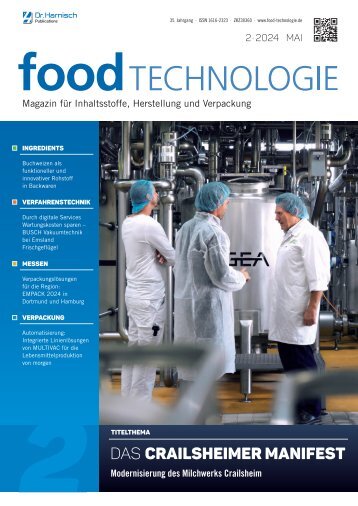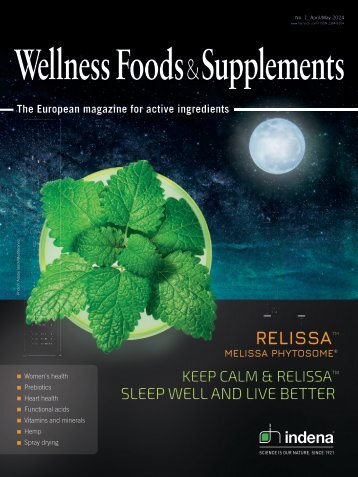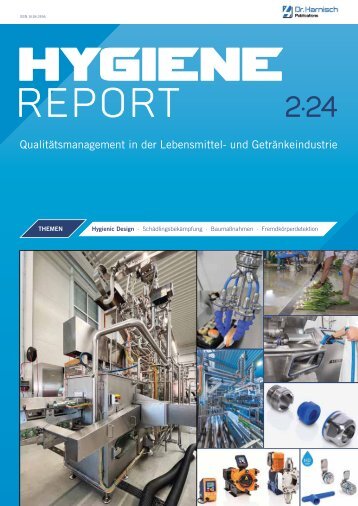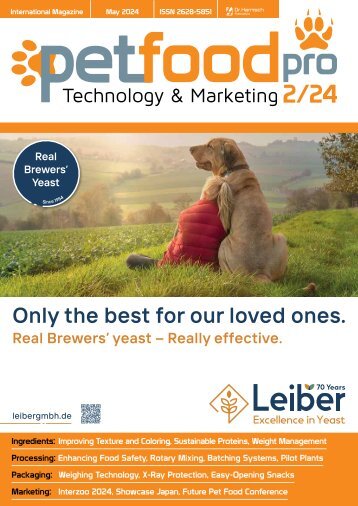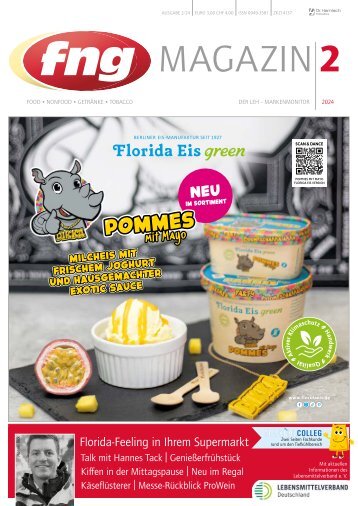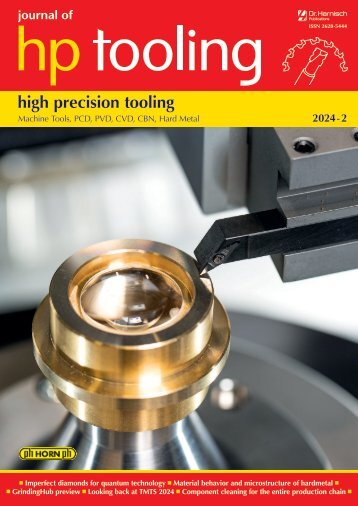food Marketing & Technology 5/2021
- Text
- Ingredients
- Marketing
- Products
- Processing
- Packaging
- October
- Germany
- Consumers
- Hygienic
- Pumps
- Harnischcom
Processing requires the
Processing requires the minimal amount of processing – and making sure that processes such as pasteurisation cause as little disruption to the product as possible can help alleviate criticisms about the highly processed nature of plant milks. Where possible, combining processes such as dilution and sterilisation, for example by using the using the HRS DSI Series, can provide benefits and reduce overall processing of the product. The benefit of sterilising using direct steam injection is the speed of the process, with sterilisation temperatures of 100 to 145 deg. C. being reached in around a second; much quicker than the fastest heat exchanger systems. For products such as plant milks, this rapid heating prevents cooking of the product and formation of caramel-type compounds which can darken the product or produce unwanted flavors. It is also useful for grain-based products, such as oat milk, which benefit from the additional dilution with water which the food-grade steam provides, but the type and model of heat exchanger chosen will depend on many different factors, such as the nature of the process to be carried out (pasteurisation, sterilisation, dehydration, etc.) and the viscosity of the drink being processed. HRS has a complete range of products from simple tube-in-tube designs to rotating or reciprocating scraped-surface designs, all of which combine efficient heat transfer with delicate product handling; ensuring that products remain in emulsion and that the product does not foul the equipment. Whatever plant-based milk product you are producing, it is important to remember that plant-based milks have the same requirements for pasteurisation, sterilisation, cooking or cooling as other beverages which contain specific ingredients. It is therefore crucial to invest in the most effective and efficient processing technology for all stages of production. fmt Author: Matt Hale is International Sales & Marketing Director, HRS Heat Exchangers 1) https://www.vegansociety.com/news/market-insights/ dairy-alternative-market/european-plant-milk-market/ukplant-milk-market 2) https://brisangroup.com/food-industry-thoughts-articles/ the-future-of-plant-based-beverages Overcoming Clean-In-Place Challenges In Hygienic Applications By Paul Cardon Hygienic applications are bound to the most stringent compliance regulations, a natural expectation considering the importance of maintaining a sanitary environment for processes involving food, cosmetics and pharmaceuticals. Established by different regulatory agencies around the world – including the U.S. Food and Drug Administration (FDA); 3-A Sanitary Standards, Inc., (3-A); and the European Hygienic Engineering And Design Group (EHEDG) – these regulations have proven to help protect the public against the distribution of contaminated products. In addition, these regulations also serve to safeguard manufacturers, providing guideposts that mitigate against catastrophic events such as a product recall or food-borne illness. As a result of these strict regulations, manufacturers must continuously work to help ensure the equipment they use do not impart any adverse effects at any point in the process. Since pumps are used extensively in hygienic applications, they too must be in compliance with these regulations at all times. This includes complying with cleaning and sanitation procedures that are designed to meet hygienic requirements. However, properly cleaning these process pumps doesn’t come without its share of challenges. Opting for a complete pump disassembly is effective, but not efficient and very timeconsuming. Another option, which many operators prefer, is the cleanin-place (CIP) method. Yet, this comes with its own set of challenges. Process pumps in hygienic applications endure a lengthy series of cleaning phases, including at least four for rinsing alone. The typical phases of the CIP process consist of removing gross debris and/or product recovery; pre-rinse; detergent recirculation; intermediate rinse; second detergent recirculation; intermediate rinse; disinfection; and final rinse. While this thorough process is essential, it also creates its share of problems, including inefficient product recovery, excessive CIP flow rates, increased water hammer, and performance issues caused by temperature variations. 38 food Marketing & Technology • October 2021
Processing When the transmission is at atmospheric pressure, the pump’s disc remains in contact with the cylinder. Photos: PSG/Mouvex The Problems With CIP Product recovery is the first problem to address before the CIP process begins. The pump, along with any major part of the process installation, is typically full of product. If the pump cannot run dry and provide vacuum and compression effects, then product recovery can’t occur. In this scenario, alternative methods are used, such as a pigging system. While useful at recovering product in specifically designed pipe sections, it is ineffective at removing product from valves, filters and pumps. Another method is water and air flushing, but this is prone to creating product contamination and waste. Excessive CIP flow rates present another problem. This rate, determined by in-pipe velocity, is based on a minimum value, usually 1.5 to 3 m/s. To provide effective cleaning, the flow must be turbulent, resulting in a flow rate almost always higher than the process flow rate. Because of this, most process pumps require a bypass to avoid an excessive internal pressure drop during CIP. However, no one has mastered the ability to split the CIP flow rate between the pump and the bypass, meaning there is no guarantee the pump will receive a thorough cleaning. When compressed air is introduced to the transmission, the pump’s bellows stretch, pushing the disc away from the cylinder. food Marketing & Technology • October 2021 Key No. 100286 39
- Seite 1 und 2: 5/21 Vol. 35 • 31377 ISSN 0932-27
- Seite 3 und 4: Editorial Drinking your Daily Dairy
- Seite 5 und 6: Vol. 35 • 31377 ISSN 0932-2744 5/
- Seite 7 und 8: Cover Story fed into the pump,” e
- Seite 9 und 10: Ingredients Dietary fibers as Healt
- Seite 11 und 12: Ingredients The leading in-person a
- Seite 13 und 14: Ingredients rather short and brittl
- Seite 15 und 16: Ingredients a route to, among other
- Seite 17 und 18: Ingredients New Sports Nutrition In
- Seite 19 und 20: Ingredients Food Ingredients offers
- Seite 21 und 22: Ingredients IFT FIRST: Ingredient S
- Seite 23 und 24: Ingredients Efficient, reliable tes
- Seite 25 und 26: Processing SIMULATE WHOLE MUSCLE ME
- Seite 27 und 28: Processing Extended Power Range up
- Seite 29 und 30: Processing A collector conveyor has
- Seite 31 und 32: Processing together with a fast val
- Seite 33 und 34: Processing Online Moisture Measurem
- Seite 35 und 36: Processing During the smoking proce
- Seite 37: Processing sufficiently fine a size
- Seite 41 und 42: Processing process becomes more tho
- Seite 43 und 44: Processing All-Seeing Solution Brin
- Seite 45 und 46: Packaging The relentless search for
- Seite 47 und 48: Packaging separate the loose kernel
- Seite 49 und 50: Packaging with the packaging system
- Seite 51 und 52: Packaging each critical FM object d
- Seite 53 und 54: Marketing Cama Group Celebrates 40t
- Seite 55 und 56: Events Success for PPMA as the Show
- Seite 57 und 58: Q4 2021 26-28 October Lagos, Nigeri
- Seite 59 und 60: Vol. 35 • 31377 ISSN 0932-2744 5/
Unangemessen
Laden...
Magazin per E-Mail verschicken
Laden...
Einbetten
Laden...








































